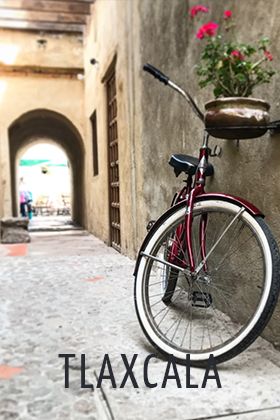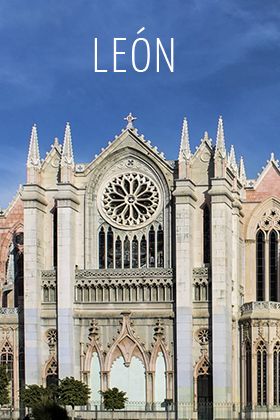The romantic city of Guanajuato
by: Travel by México

The romantic city of Guanajuato
by: Travel by México
Located at the bottom of a deep valley, expanding towards the hillside of the mountain, shines a city with a misaligned aesthetic, but of outstanding imagination and unusual beauty.
The buildings follow one after another, some with different shapes and dimensions, and others giving way to the lavishness of different façades where stones adorn palaces and large houses with a presence from older days. Guanajuato is an incomparable city: a historic jewel of Mexico where the arts and culture spring in various rich ways while being in step with the modern lifestyle.
According to some etymologists, the name Guanajuato comes from the Tarascan term "Quanashuato", a term composed of "Quanas", frogs, and "Huuato" mountainous place, while the word "to", implies the abundance of something. Thus, the meaning of Quanashuato is "mountainous place where frogs are abundant" or simply "mountainous place of frogs". It is noteworthy to mention that the image of these frogs, curiously molded in two enormous rocks due to erosion, inspired the indigenous Chichimeca people of the region to worship them. It is very probable that for that reason, they decided to settle there, since the geography of such a rugged place was not an ideal site for the establishment of a town. Nevertheless, through time, once the Spanish were settled in New Spain, the exploitation of the mines in Guanajuato would give the richness and splendor that has distinguished this place since colonial times. This is probably the only city where we may find the best in Spanish architecture, either in its streets and alleys, plazas and gardens, or in its great buildings.
And it is precisely the appeal of the public places of the city, so suitable to serve as natural theatres, which motivated Mr. Enrique Ruelas, Director of Dramatic Art at the University of Guanajuato, to utilize the Plaza de San Roque as a stage for the performance of plays inspired by the work of Don Miguel de Cervantes Saavedra. This would begin the tradition known as the Cervantino Short Plays and later in 1972, the first Cervantino International Festival was held. This festival is distinguished nowadays as the most important festival of the arts in Latin America.
Without a doubt Guanajuato is one of the most charming cities in Mexico. It captures the senses of the visitors with beautiful spaces encircled and adorned by streetlamps. For example, there is the Garden de la Unión which received this name in 1861, and stands out for being the first park that had electric lighting. Also, in 1861 the Garden Reforma would be opened in what served formerly as the courtyard of the Temple of Belén.
The arch standing in the main entrance was built by the architect José Noriega in the year 1875. By 1831 a promenade was opened in the Hacienda de El Cantador, and is nowadays one of the most enjoyable places for passersby, serving also as a stage for the Cervantino International Festival year after year. There are so many plazas that form part of such an exquisite city. The Plaza de la Paz (Plaza of Peace), where erected is the monument that gives the square its name, is a masterpiece by the Mexican sculptor Jesús Contreras and was inaugurated by General Porfirio Díaz in 1903. The Plaza del Baratillo is a unique Guanajuatense corner with its exquisite Florentine fountain; the Plaza of Mexiamora, with a fountain standing in the middle which is colored by the rich shades of green stones; the Plaza of San Fernando coming to life on behalf of the artists, musicians and singers who use it as a stage during the festival, elevating the name of Guanajuato before the world. The music is another great inspiration of this city, resounding between the streets and alleys along with the rhythms of the traditional student bands.
And at dawn, Guanajuato is lit with its traditional colonial streetlamps, evoking a romantic aspect in a city bursting with history and culture. There we have the Street of Padre Hidalgo, accentuated by the height of the walls which are connected by four arches, adorned by windows with iron bars, green climbing plants and lush flowerpots, stopping time and going back to a medieval past. And the famous Alley of the Kiss! A meeting point for those in love who, surrounded by the silence, confess their love while immersed in the magic of such a charming atmosphere. It‘s Guanajuato, with the Autonomous University and the wonderful Theatre Juárez which opened its doors for the first time in 1903 to the opera Aida Giuseppe Verdi.
It is a city that served as a stage for heroic battles, where men moved by the spirit of patriotism offered their lives with courage. The fervor of the followers of Hidalgo gathered on these same cobblestone streets. They surrounded the Spanish who took as their headquarters the Alhóndiga de Granaditas. The bravery of Juan José de los Reyes Martínez, the "Pípila", was immortalized here when he carried on his back an enormous piece of rock in order to reach the entrance of the fort and set fire to the main door. The Spanish were forced to give in. However, later on in the same Alhóndiga, the heads of the four insurgents who inspired the armed revolt would be hung: Hidalgo, Allende, Aldama and Jiménez.



















